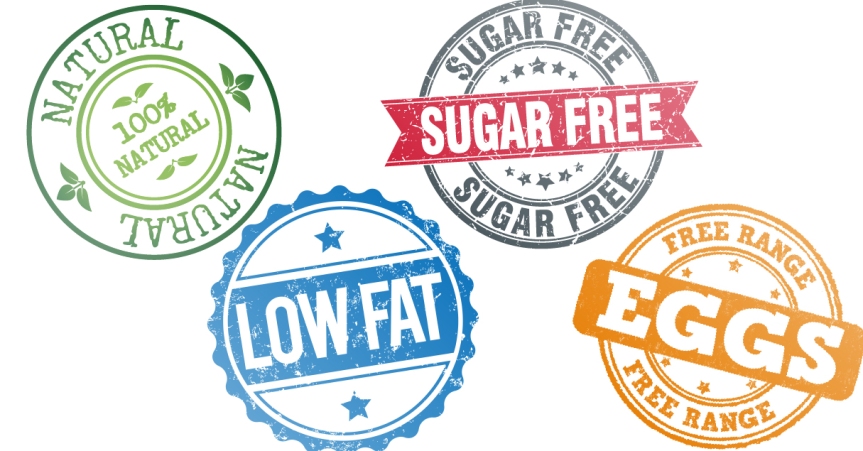Food Labels 101
You would think that if you wanted to know exactly what is in your food, you would just read the label. Think again. Although labels are supposed to be there to tell us exactly what’s in the food we’re about to purchase, they can be extremely deceiving. With consumers being more health conscious than they ever have been, food companies have figured out how to trick us with misleading claims and clever marketing phrases.
Labeling claims are carefully crafted to catch your attention and convince you that the product is healthier than it actually is. Look out for these common, but misleading phrases found on food labels.
Natural
This is possibly the most misleading term in the food industry. This does not mean that the product is healthy or even all that natural. The word “Natural” is used to reel in unaware consumers who tend to believe it means the same thing as “organic”, which it does not. In fact, when it comes to labeling foods, the term has no clear meaning and isn’t regulated by the FDA, much less, any agency. A recent survey of 1,005 adults by Consumer Reports found that more than half of consumers usually seek out products with “natural” on the label, based on the false belief that they’re made without GMO’s (Genetically Modified Organisms), hormones, or artificial ingredients.
Low Fat
Food labels claiming that the product is “low fat” can be found on everything from yogurt to salad dressing. Unlike the term “natural”, the FDA does regulate when this claim can be used. This may seem to offer the assurance that the food has a significant nutritional benefit, but in fact it could be the opposite. Low fat products are processed to reduce either calories or fat and some products are simply watered down. Often when these things are removed something is added in their place, like sugar or artificial ingredients.
Cage free or Free Range
The terms “cage free” or “free range” might conjure up lovely images of happy hens frolicking around a farm yard all day, without a care in the world, but unfortunately this is not the case. The USDA (United States Department of Agriculture) defines free range as having exposure to the outdoors. The problem is that there are no requirements for the amount, duration or quality of the outdoor exposure. Most “free range” or “cage free” birds spend their lives in extremely over-crowded warehouses, with little exposure to the outdoors. Diseases run rampant in these conditions, due to unclean surroundings, tight quarters and contaminated feed. If you are looking for eggs or poultry from happy birds, look for “pasture raised” on the labels.
Sugar Free
Products labeled “sugar free” may not contain refined sugar, but it is often replaced with something far less healthy. “Sugar free” usually indicates the presence of artificial sweeteners and sugar alcohols. Aspartame, sucralose, and other artificial sweeteners can have just as many, if not more negative health effects than regular sugar. Just because a food has no added sugar, doesn’t mean that it’s sugar free! Juice, for example has no sugar added to it, but the naturally-occurring sugar in an 8 ounce glass of juice still contains anywhere from 24 to 36 grams of sugar – the equivalent of six to nine teaspoons.
Finding your way in the supermarket jungle
Making informed choices on the food that we buy for ourselves and our families can be difficult when food companies are constantly trying to mislead us, but here are a few suggestions to help you find your way:
- Stay informed – the best way to avoid being pulled-in by healthy-sounding deceptive marketing phrases is to become knowledgeable about the foods that you should be eating.
- Be skeptical – If something sounds too good to be true, it probably is.
- Shop the Perimeter – The perimeter of the store is where the freshest and least processed foods are generally found, such as fruits, vegetables, meat, and fish.
- Keep it simple – Avoid foods that contain more than five ingredients, artificial ingredients or ingredients you can’t pronounce.
Want to see if you’ve learned a few things about food labels? Take the Web MD quiz here.
Written by: Jennifer Robinson, Social Media Coordinator – Ancora Education


